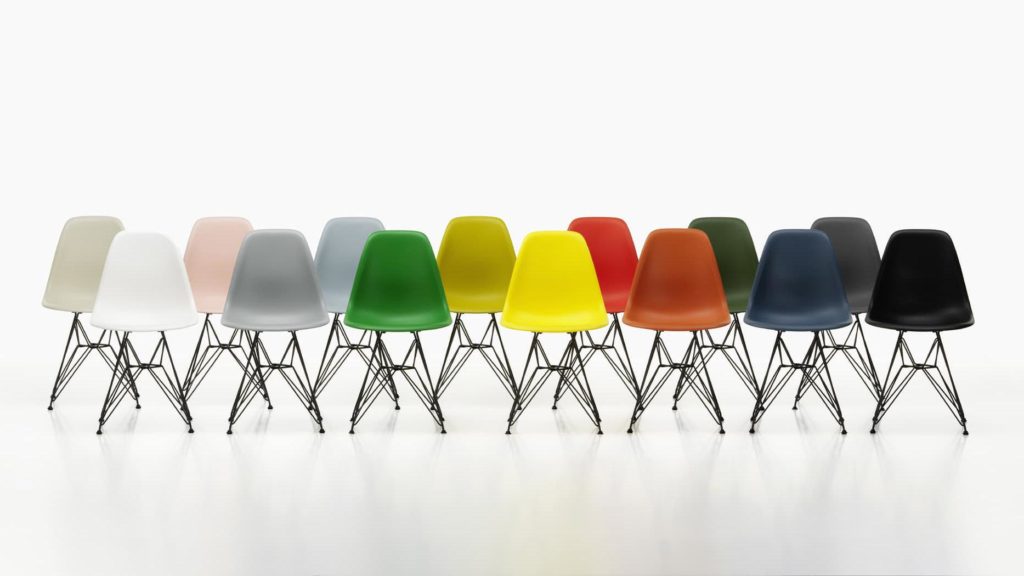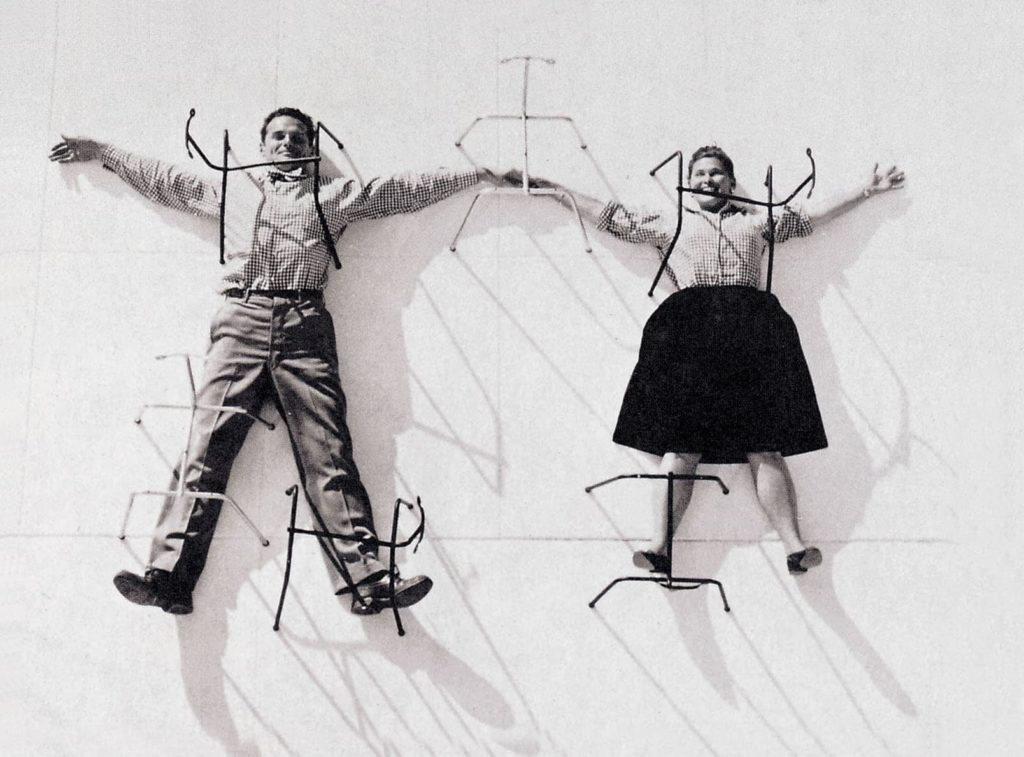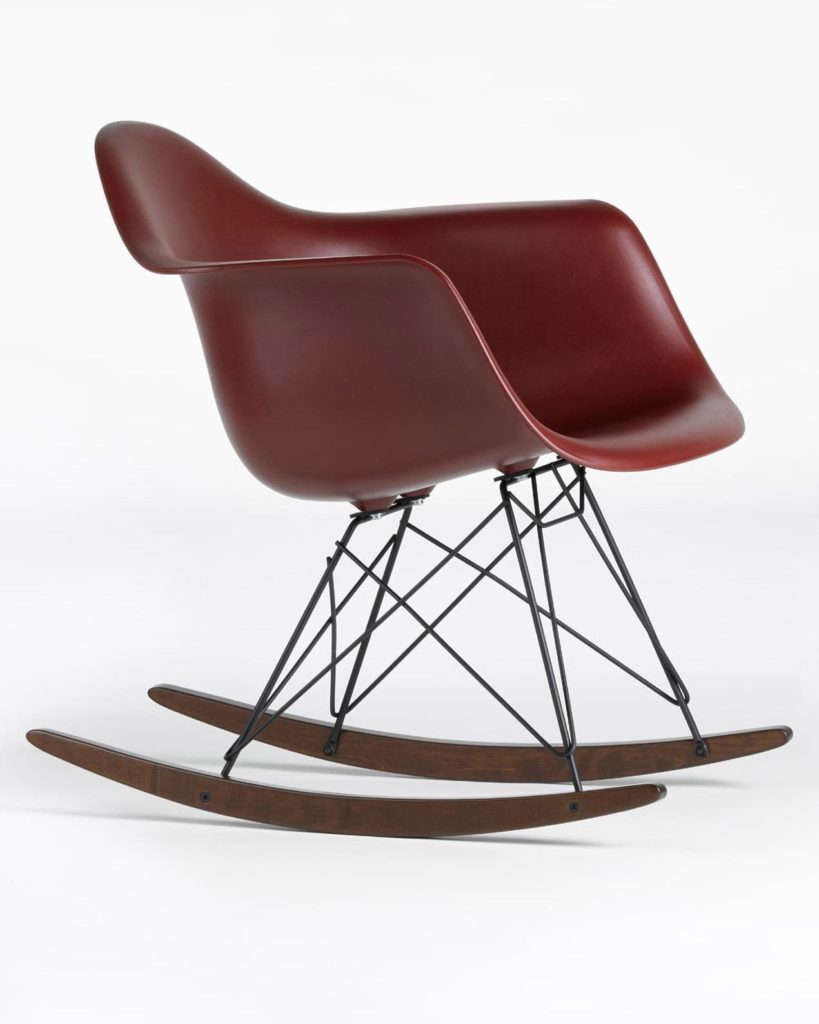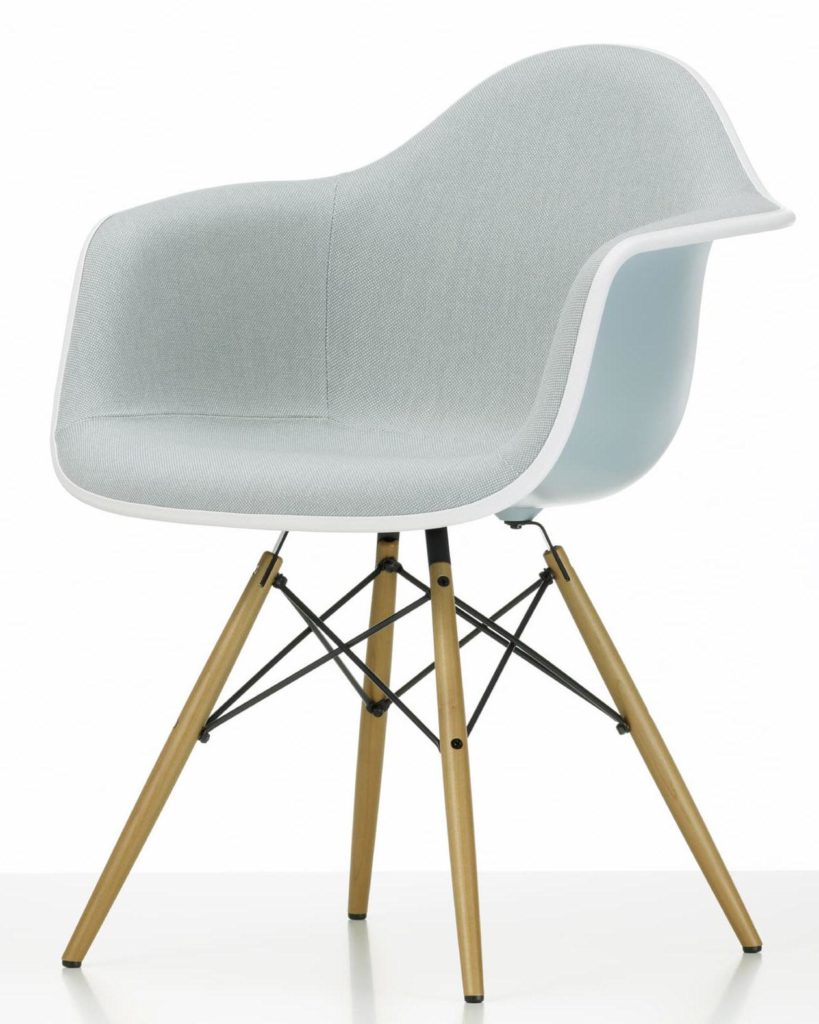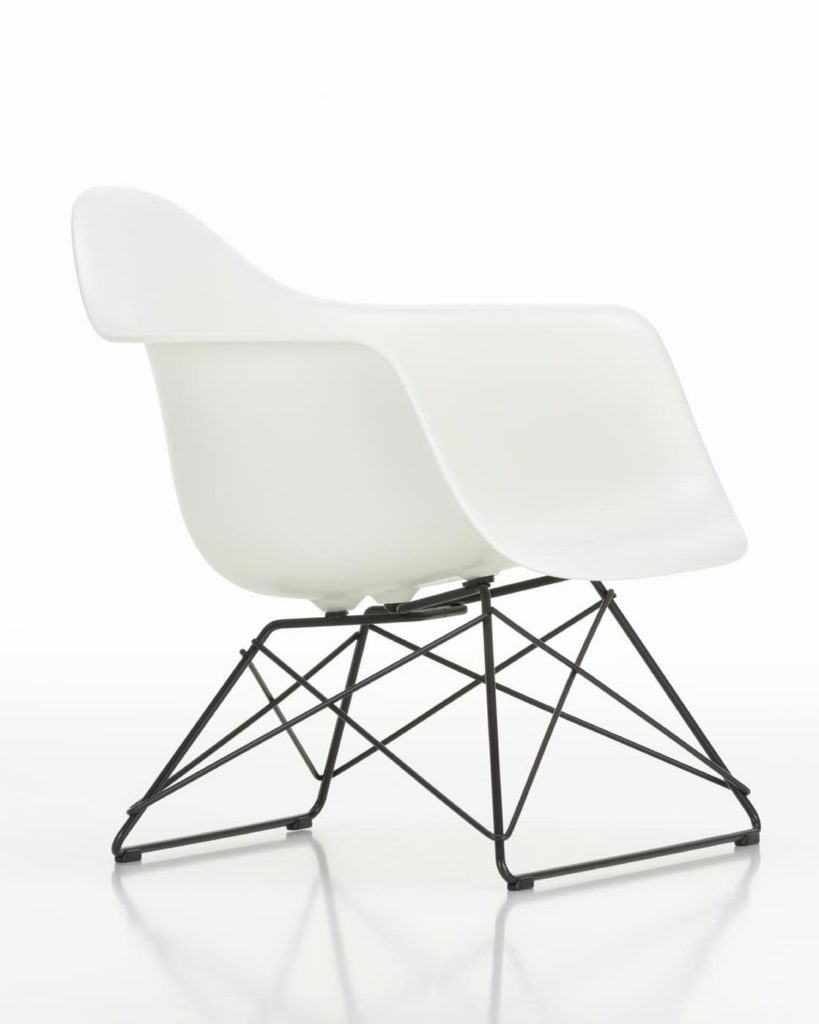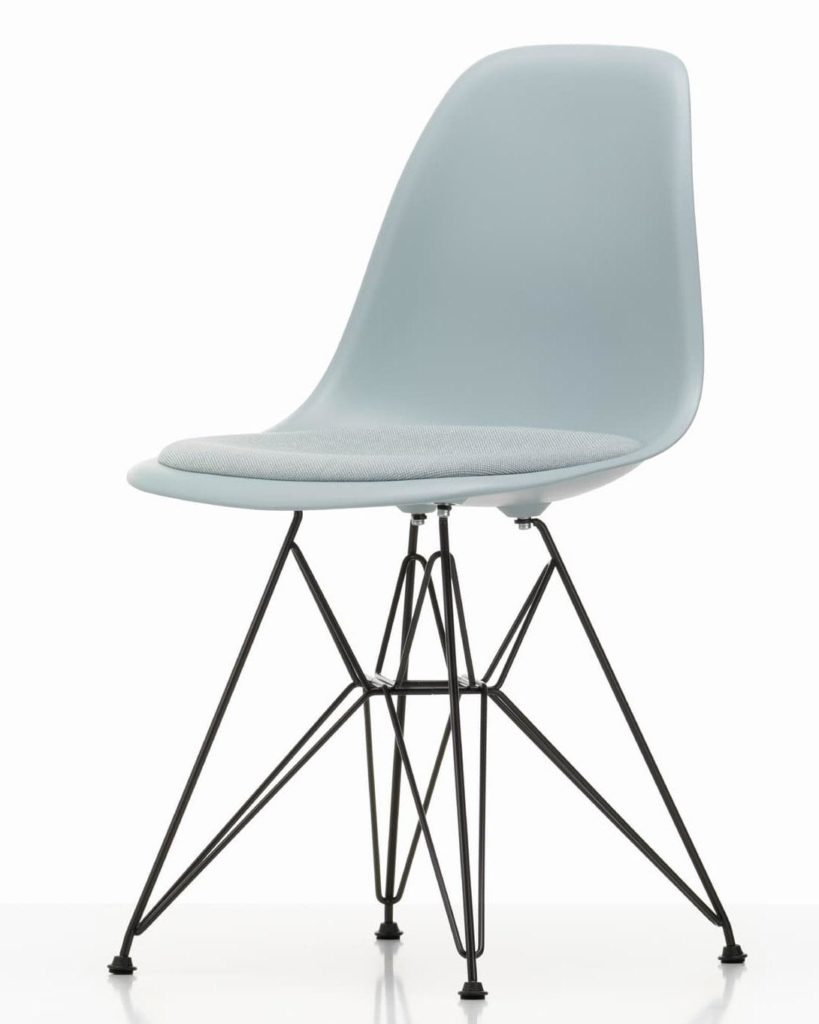A chair for eternity
When Charles and Ray Eames were designing an inexpensive chair, all they were really interested in was making it as practical as possible. They created a design icon that is now 70 years old – the “Eames plastic chair”.
Charles and Ray Eames married in 1941, moved to Los Angeles and worked together on a technique for moulding plywood in three dimensions. The aim was to create affordable and comfortable chairs. In 1950, they achieved a breakthrough with the “Eames plastic chair”.
It is fair to say that their basic understanding of design differed fundamentally from that of most designers. And still does to this day. This, presumably, is what makes all the difference.
Designer as host
In their four decades of creative work, husband-and-wife team Charles and Ray Eames never pursued that clichéd goal of designers: to create iconic designs. Rather, the two tireless creators of unique artworks fell in love with the idea of designing for themselves – and not for other people.
As well as this, however, they felt that a good designer should simply assume the role of a good host in anticipating the needs of his or her guests.
A chair for everyone
And so it came as no surprise when, in 1948, Charles and Ray Eames came up with the idea of designing a highly practical, comfortable and easy-to-clean chair for private use, i.e. for as many people as possible.
The aim was for the chair to be affordable and capable of being produced industrially. After fine-tuning their ideas for some time, they ultimately opted for a design that is very close to what we know today as the Eames plastic chair. Consisting of just a base and a seat shell, it was designed to captivate the eye.
The only difference was that, at the time, the seat shell was made of stamped metal rather than plastic. In any case, the design was submitted to the Museum of Modern Art’s International Competition for Low-Cost Furniture Design. It was largely overlooked, however, due to its metal construction which proved to be too heavy and too impractical.
However, the designers – who had already made a name for themselves – were not discouraged by this in any way. Instead, they set off in search of an alternative material to replace the stamped metal shell. Such a material needed to be light, robust and relatively inexpensive to manufacture.
A new wonder material
Exactly 70 years ago, they struck gold in the form of fibreglass-reinforced polyester resin, a material that had previously been used exclusively for military purposes, for example in the housing of radar equipment.
However, they recognized the advantages of the material – mouldability, rigidity and suitability for industrial manufacturing – and began to use it instead of the stamped metal plate from their original chair design.
And thus the fibreglass chair was born! At a time when chairs generally had a separate seat and backrest, its organically formed, one-piece seat shell was an eye-catching innovation in a world that was still dominated by wood. As well as this, the fibreglass used was pleasant to the touch and the chair’s easily formable shell ensured a high degree of individual comfort.
As Charles Eames’ grandson, Eames Demetrios, recalls today: “The form of the fibreglass chair was the high point of the intensive eleven-year period during which Charles and Ray Eames worked with three important materials: wood, wire and, of course, plastic. The chair was a big hit right away and brought a new kind of beauty into the lives of many people.”
The form of the fibreglass chair was the high point of the intensive eleven-year period during which Charles and Ray Eames worked with three important materials: wood, wire and, of course, plastic.
Eames Demetrios, grandson of Charles Eames
In the decades that followed, this piece of furniture proved to have an extraordinary influence. Even though it was developed for private use, it quietly established itself in public spaces as well.
And due to its newfound ubiquity, it acquired a certain “invisibility”. The different variants that soon appeared became positively commonplace. People used them every day in restaurants, schools and office buildings. While the chair was highly “visible” in design circles, it became “invisible” in the normal world.
However, the particular aura surrounding this chair had been recognized much earlier – in 1953 – by a certain Willi Fehlbaum. During a trip to the USA, the Swiss entrepreneur discovered the Eames design in a shop window in New York.
Inspired by this, he not only decided to become a furniture producer himself, but also took immediate steps to acquire the European licence for producing and marketing the chairs.
Since then, the Eames chair has been inextricably linked with Vitra, Fehlbaum’s company, on the European market. As well as this, the chair forms the basis of a close friendship between Vitra and the Eames family that continues to this day, even after the death of Charles and Ray Eames. Both parties work together with great care and respect to preserve the heritage of the legendary husband-and-wife designer team.
It will be interesting to see how the official 70th anniversary of the Eames plastic chair is celebrated later this year. In any case, we can safely expect plenty of standing ovations in the media for this supreme style icon.
Text: Johannes Stühlinger
Translation: Rosemary Bridger-Lippe
Photos: Vitra
